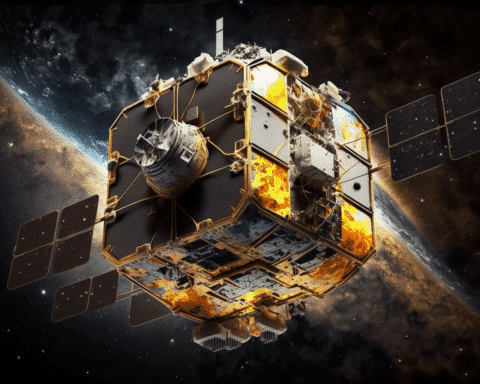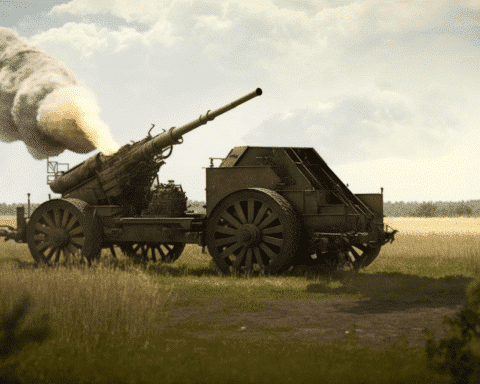Ukrainian drones undertook deep operations into western Russia, hitting military targets over an extended four-hour night raid, according to statements from Russian officials and media on Wednesday.
These drones targeted an airport close to the Russia-Estonia-Latvia borders, igniting a significant fire and damaging four Il-76 military cargo planes, as per Tass, the Russian state news outlet.
This widespread assault on at least six different regions marks the most comprehensive drone operation by Ukraine on Russian territories since their conflict began a year and a half ago. Even so, there were no reported casualties. Moscow has often accused Ukraine of launching drones from the Belgorod region towards the capital and making other incursions.
Ukrainian authorities haven’t provided an official statement; typically, they refrain from acknowledging attacks on Russian soil. However, Russia retaliated, unleashing drones and missiles on Kyiv in a substantial joint assault, resulting in two fatalities.
These aerial offences in Russian regions have surged, mirroring Ukraine’s intensified efforts against Russian military installations situated behind the eastern and southern Ukrainian conflict zones.
Ukraine has also reported deploying maritime drones against Russian naval vessels in the Black Sea. Recent claims from Ukrainian media sources suggest drones were used to target bomber planes stationed deep within Russia.
The Pskov airport, approximately 700 kilometres from both the Ukrainian border and Moscow bore the brunt of the damages during these nocturnal raids. Videos and social media posts showcased smoke enveloping Pskov city and the sounds of air defence systems echoing through the night.
The governor of Pskov, Mikhail Vedernikov, temporarily suspended all flight operations to evaluate the damage, later confirming it was not severe and regular services would resume soon.
The other targeted regions included Oryol, Ryazan, Kaluga, and Bryansk. Furthermore, Moscow’s primary airports temporarily stopped flights.
Ukraine’s Minister of Digital Transformation, Mykhailo Fedorov, noted that the country possesses drones capable of covering 500 kilometres but did not claim responsibility for any attacks.
Kremlin’s spokesperson, Dmitry Peskov, emphasized that the military is keen to understand the modus operandi behind these attacks to prevent future incidents.
Experts believe Ukraine’s strategy is to stretch Russian military defences. Douglas Barrie, from the International Institute for Strategic Studies, indicated that deploying air defences to one location weakens defences elsewhere.
Maria Zakharova, Russia’s Foreign Ministry spokeswoman, insinuated that Ukraine’s drone capabilities were enhanced by Western satellite intelligence.
Russian media provided limited coverage of these events, but the popular talk show “60 Minutes” on Russia 1 discussed the attacks extensively.
In retaliation, Russia employed drones and missiles in one of its most severe attacks on Kyiv in recent months, killing two individuals.
Kyiv’s military chief, Serhiy Popko, reported that the capital faced an onslaught of Iranian-made Shahed drones and missiles. The aftermath was evident in the debris and destruction observed by local residents.
Separately, on the same day, Crimea’s Russian-appointed officials announced they thwarted a drone strike aimed at Sevastopol’s port. Earlier drone operations have targeted fuel stations and airports in Crimea and Russian-occupied Ukrainian territories.
Additionally, explosions were reported in Odesa and the Cherkasy region.
The Ukrainian air defence system reportedly neutralized 28 cruise missiles and 15 out of 16 Shahed drones that targeted multiple regions overnight.
In the midst of escalating tensions and high-tech warfare, the resilience and determination of both nations are evident. As drones become an increasingly pivotal tool in modern conflict, their strategic deployment by Ukraine and Russia underscores a new dimension in warfare. The international community watches closely, hoping for a resolution that prioritizes peace, stability, and the safety of innocent civilians.




